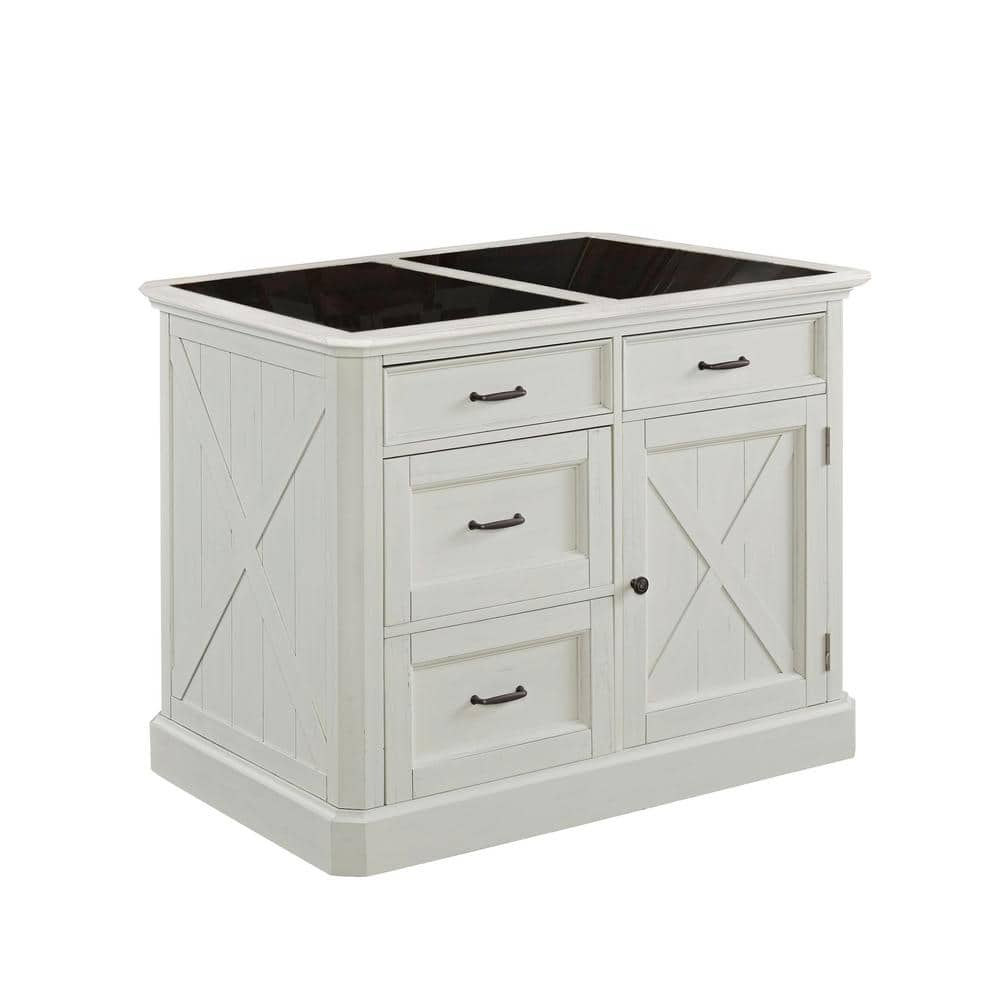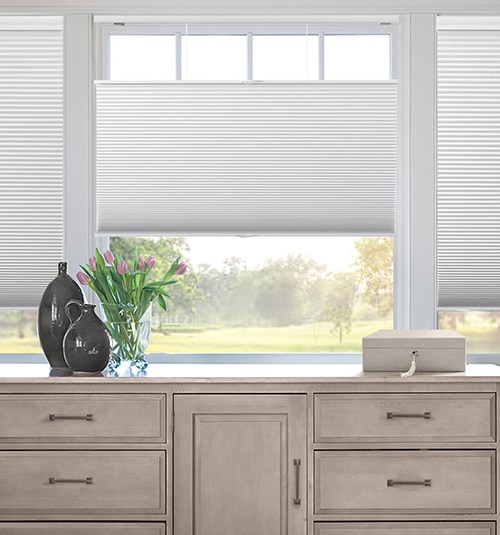StyleWell Bainport Ivory Wooden Kitchen Island with Natural Butcher Block Top and Storage (48″ W)
Butcher block kitchen island with farmhouse details. Ample storage with food safe top and drop leaf. 47.5 in. W x 30 in. D x 36 in. H.
Our farmhouse-inspired StyleWell Bainport kitchen island creates storage anywhere it’s needed. The freestanding design is fitted with rustic beadboard doors and two drawers. Three open shelves store dinnerware, cookware and other everyday essentials. Two doors conceal even more storage with adjustable shelves. Finished in classic ivory, it’s a standout addition to any dining or kitchen area.
- Exclusively at The Home Depot
- Farmhouse style kitchen island
- Classic Farmhouse Beadboard Doors
- 2 doors conceal 2 adjustable interior shelves
- 3 storage drawers
- 3 exterior adjustable shelves for open storage
- Crafted of wood
- Ivory finish with a contrasting natural finished top
- Roomy storage for a dining room, kitchen or any area where extra storage is needed
- Assembly required
- Kitchen island measures 36 in. H x 47.5 in. W x 30 in. D
- Drop leaf dimensions 47.5 in W x 12.0 in D
- Product Dimensions: 47.50 in W. x 30 in D. x 36 in H.
- 1 year warranty; not inclusive of commercial use, acts of nature, and abusive use
Additional information
| Dimensions | H 36.00 in, W 47.50 in, D 30.00 in |
|---|---|
| Depth | Standard (21-36 in.) |
| Width | Standard (40-55 in.) |
| Certifications and Listings | CARB Compliant, CARB Compliant, EPA Approved, EPA Approved |
| Manufacturer Warranty | 1 Year Warranty |






by Mark
Very nice island cabinet. It is quite heavy, especially if you have to handle the box that it comes in. It seems well-made, and easy enough to assemble, if you are known to have patience with furniture assembly. Looks great in my kitchen.
by Steve
We stained the top to put our own touch on it. It is sturdy and perfect for our style. Luv it
by David
We love it and worked nicely with our kitchen but the leaf portion after a few weeks started sagging, that’s why 4 stars instead of 5. I wish there’s an easy way to make it permanently even with the rest of the island!
by Chris
Assembly was relatively easy.
by Rachel
We love our new island! Took two people about 3 hours to put together. The top butcher block is unfinished wood, so we sanded it down and applied a few coats of clear polyurethane to protect it. We actually like that we can refinish/restain it a different color if we want in the future! It feels and looks like really high quality wood. Overall really happy with it!
by Steve
Took some doing to put together. A lot of pieces but not too bad. It’s all graphic directions which were sufficient. Took 2 persons to lift the top on and line it up. It’s the peg and cam system. HYou wouldn’t want to drop the top as it’s pieces of wood lined up like planks. I took the advice of reviewers to season and protect the wood top which is unfinished. I could see where the wood planks could separate if they dried out. So I bought the wood butcher block oil and conditioner. There is an odor when it’s all put together. I left all the drawers and cabinets open and put baking soda and cloth runners inside. It’s taken almost two weeks until the odor dissipated. It’s not the oil and conditioner that made the odor as the unit smelled before I applied those products. The fold up part of the top stayed bent down a little as the underneath wood brackets didn’t line up exactly to support it. So we put those felt tabs on the top of the brackets as I’m going to leave the top up. The shelves don’t line up exactly with the sides, leaving gaps where the pegs are. I wouldn’t pay full price for this as I was disappointed with it, but considering it weighed over 125 lbs, the box wasn’t damaged, all the pieces were there and in good condition along with decent instructions, I’m keeping it. The unit I ordered before, a totally different brand, which was really the one I wanted, had all of those problems. I was stuck with a severely damaged product for over a month until UPS finally picked it up. So I had considerable reservations about ordering another piece of furniture here. But I got the flyer in the mail and it looked good so I decided to try it. Would I order it again? No. But it’s ok for the sale price. I just don’t think it’s going to last beyond a few years. I think I’m just going to have to go to a furniture store next time and get something of better quality already assembled in a factory. Sigh.
by Ronda
nice quality for price -took about 2-3 hours to assemble – looks great!